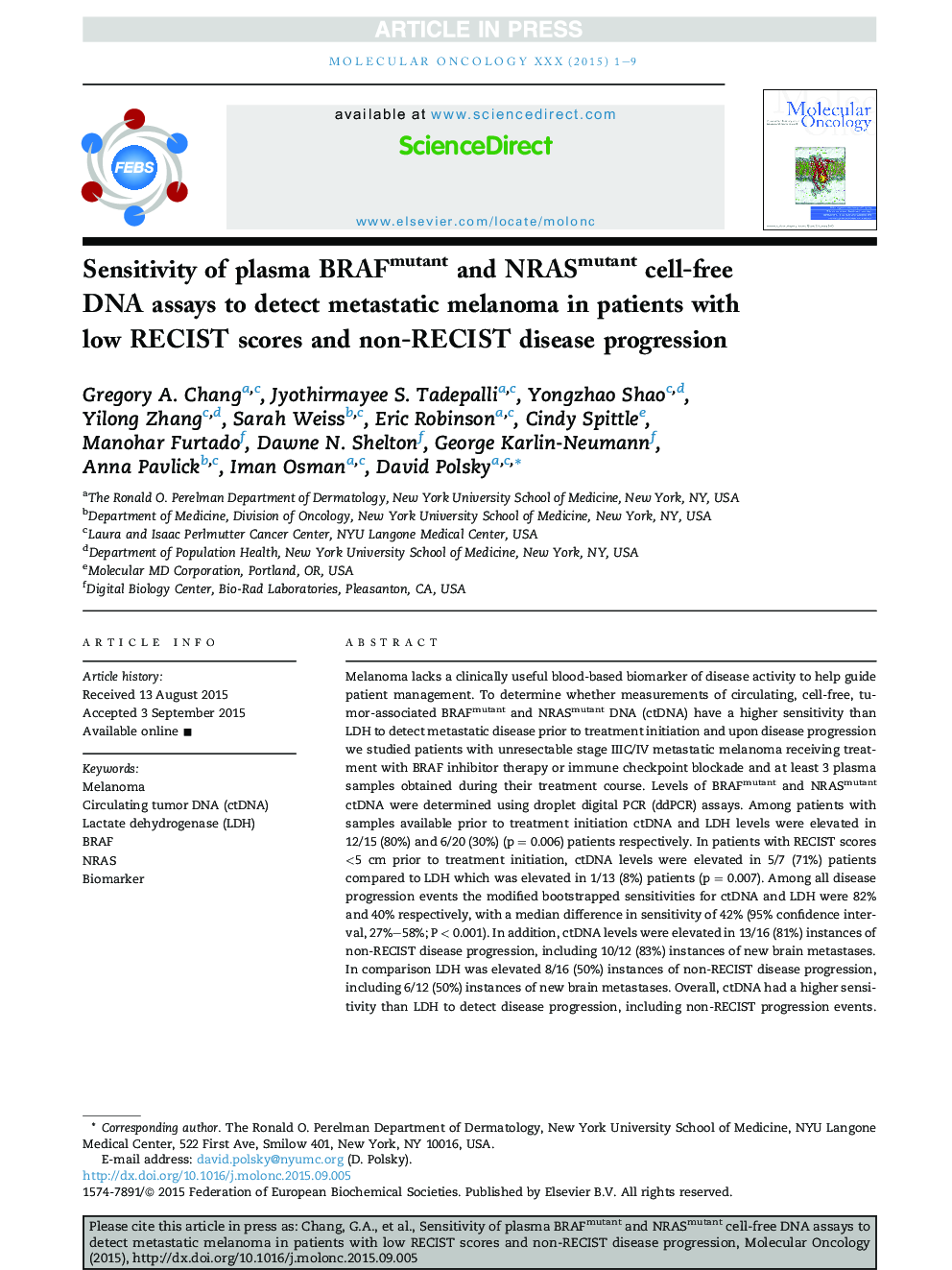| Article ID | Journal | Published Year | Pages | File Type |
|---|---|---|---|---|
| 10914540 | Molecular Oncology | 2016 | 9 Pages |
Abstract
Melanoma lacks a clinically useful blood-based biomarker of disease activity to help guide patient management. To determine whether measurements of circulating, cell-free, tumor-associated BRAFmutant and NRASmutant DNA (ctDNA) have a higher sensitivity than LDH to detect metastatic disease prior to treatment initiation and upon disease progression we studied patients with unresectable stage IIIC/IV metastatic melanoma receiving treatment with BRAF inhibitor therapy or immune checkpoint blockade and at least 3 plasma samples obtained during their treatment course. Levels of BRAFmutant and NRASmutant ctDNA were determined using droplet digital PCR (ddPCR) assays. Among patients with samples available prior to treatment initiation ctDNA and LDH levels were elevated in 12/15 (80%) and 6/20 (30%) (p = 0.006) patients respectively. In patients with RECIST scores <5 cm prior to treatment initiation, ctDNA levels were elevated in 5/7 (71%) patients compared to LDH which was elevated in 1/13 (8%) patients (p = 0.007). Among all disease progression events the modified bootstrapped sensitivities for ctDNA and LDH were 82% and 40% respectively, with a median difference in sensitivity of 42% (95% confidence interval, 27%-58%; P < 0.001). In addition, ctDNA levels were elevated in 13/16 (81%) instances of non-RECIST disease progression, including 10/12 (83%) instances of new brain metastases. In comparison LDH was elevated 8/16 (50%) instances of non-RECIST disease progression, including 6/12 (50%) instances of new brain metastases. Overall, ctDNA had a higher sensitivity than LDH to detect disease progression, including non-RECIST progression events. ctDNA has the potential to be a useful biomarker for monitoring melanoma disease activity.
Related Topics
Life Sciences
Biochemistry, Genetics and Molecular Biology
Cancer Research
Authors
Gregory A. Chang, Jyothirmayee S. Tadepalli, Yongzhao Shao, Yilong Zhang, Sarah Weiss, Eric Robinson, Cindy Spittle, Manohar Furtado, Dawne N. Shelton, George Karlin-Neumann, Anna Pavlick, Iman Osman, David Polsky,
